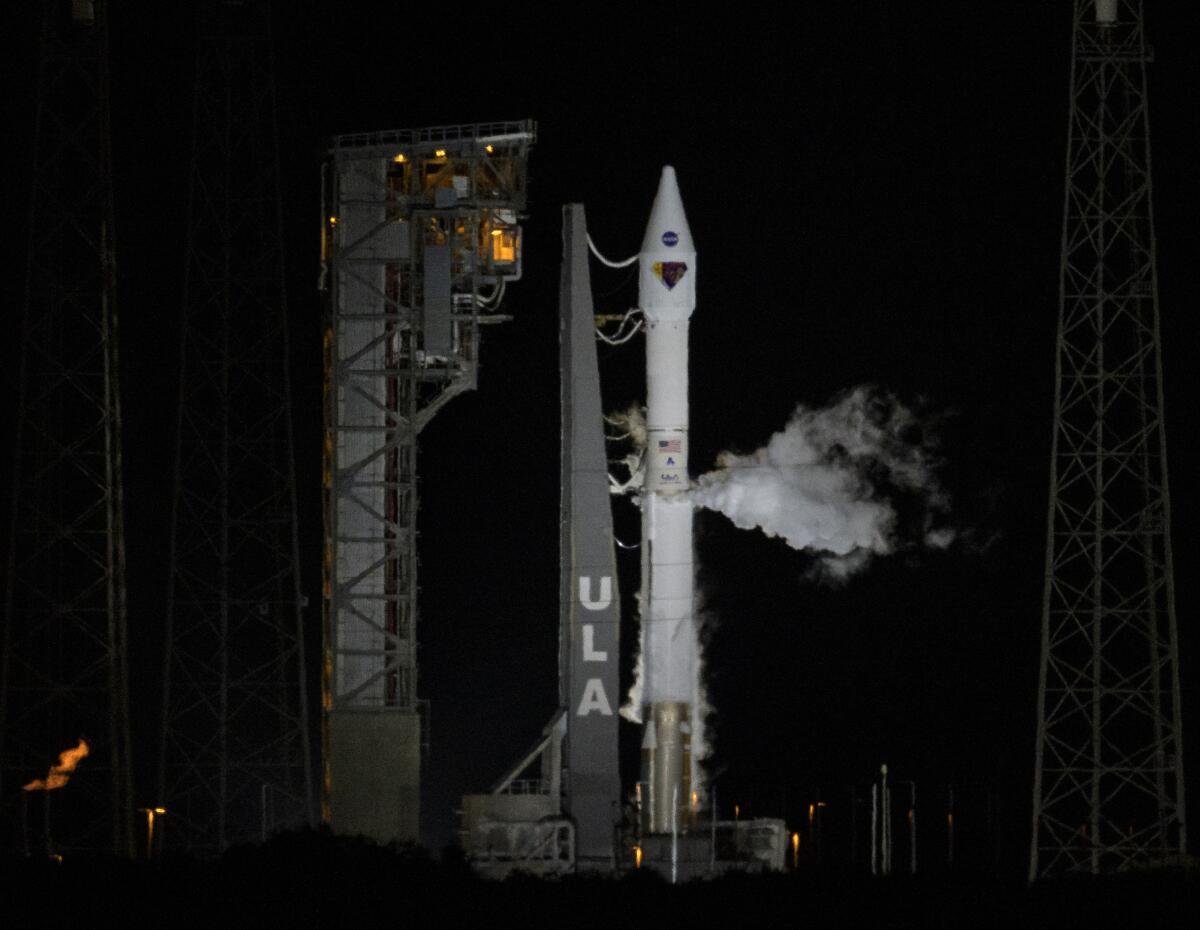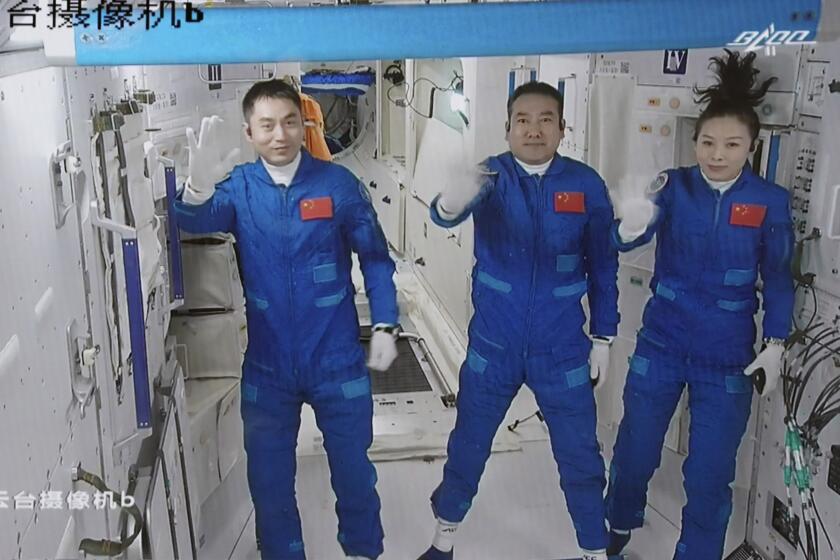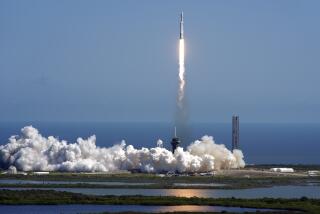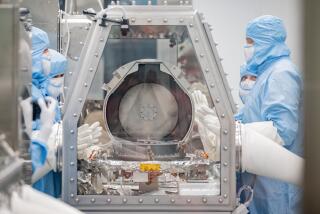NASA’s asteroid hunter Lucy soars into the sky — with diamonds

- Share via
CAPE CANAVERAL, Fla. — A NASA spacecraft named Lucy rocketed into the sky with diamonds Saturday on a 12-year quest to explore eight asteroids.
Seven of the mysterious space rocks are among swarms of asteroids sharing Jupiter’s orbit, thought to be the pristine leftovers of planetary formation.
An Atlas V rocket blasted off before dawn, sending Lucy on a roundabout orbital journey that will span nearly 4 billion miles.
Lucy is named after the 3.2 million-year-old skeletal remains of a human ancestor found in Ethiopia nearly a half-century ago. That discovery got its name from the 1967 Beatles song “Lucy in the Sky With Diamonds,” prompting NASA to send the spacecraft soaring with band members’ lyrics and other luminaries’ words of wisdom imprinted on a plaque. The spacecraft also carried a disc made of lab-grown diamonds for one of its science instruments.
The paleoanthropologist behind the fossil Lucy discovery, Donald Johanson, said he was filled with wonder about this “intersection of our past, our present and our future.”
Three astronauts entered China’s space station for a six-month mission, setting to work after successfully docking aboard their Shenzhou-13 spacecraft.
“That a human ancestor who lived so long ago stimulated a mission which promises to add valuable information about the formation of our solar system is incredibly exciting,” said Johanson, of Arizona State University, who traveled to Cape Canaveral for the launch.
Lucy’s $981-million mission is the first to aim for Jupiter’s so-called Trojan entourage: thousands — if not millions — of asteroids that share the gas giant’s expansive orbit around the sun. Some of the Trojan asteroids precede Jupiter in its orbit, while others trail it.
Despite their orbits, the Trojans are far from the planet and mostly scattered far apart from one another. So there’s essentially zero chance of Lucy getting clobbered by one as it swoops past its targets, said the Southwest Research Institute’s Hal Levison, the mission’s principal scientist.
Lucy will swoop past Earth next October and again in 2024 to get enough gravitational oomph to make it all the way out to Jupiter’s orbit. On the way there, the spacecraft will zip past asteroid Donaldjohanson between Mars and Jupiter. The aptly named rock will serve as a 2025 warm-up act for the science instruments.
Drawing power from two huge circular solar wings, Lucy will chase down five asteroids in the leading pack of Trojans in the late 2020s. The spacecraft will then swoop back toward Earth for another gravity assist in 2030 that will swing it back out to the trailing Trojan cluster, where it will zip past the final two targets in 2033.
It’s a complicated, circuitous path that had NASA’s science mission chief, Thomas Zurbuchen, shaking his head at first. “You’ve got to be kidding. This is possible?” he recalled asking.
Lucy will pass within 600 miles of each target; the biggest one is about 70 miles across.
“Are there mountains? Valleys? Pits? Mesas? Who knows? I’m sure we’re going to be surprised,” said Johns Hopkins University’s Hal Weaver, who’s in charge of Lucy’s black-and-white camera. “But we can hardly wait to see what ... images will reveal about these fossils from the formation of the solar system.”
NASA plans to launch another mission next month to test whether humans might be able to alter an asteroid’s orbit — practice in case Earth ever has a killer rock headed this way.
More to Read
Sign up for Essential California
The most important California stories and recommendations in your inbox every morning.
You may occasionally receive promotional content from the Los Angeles Times.










